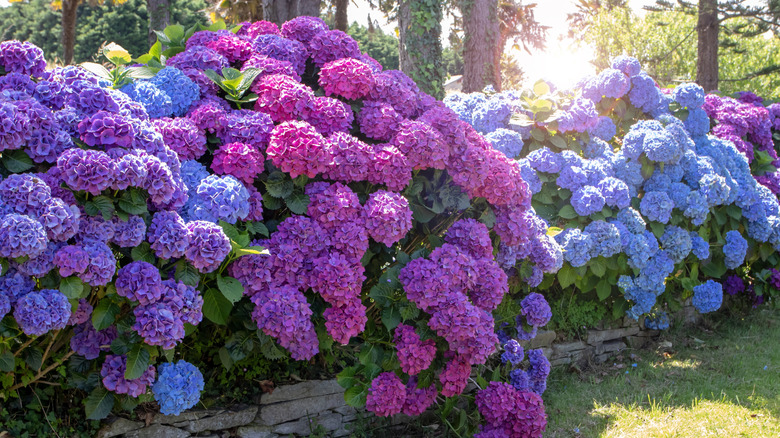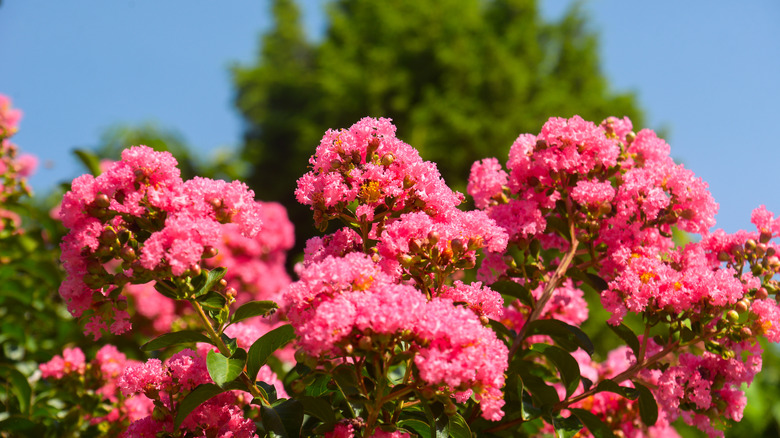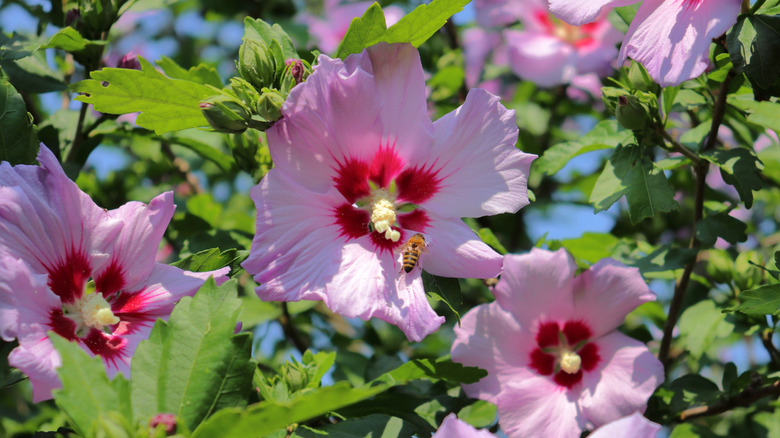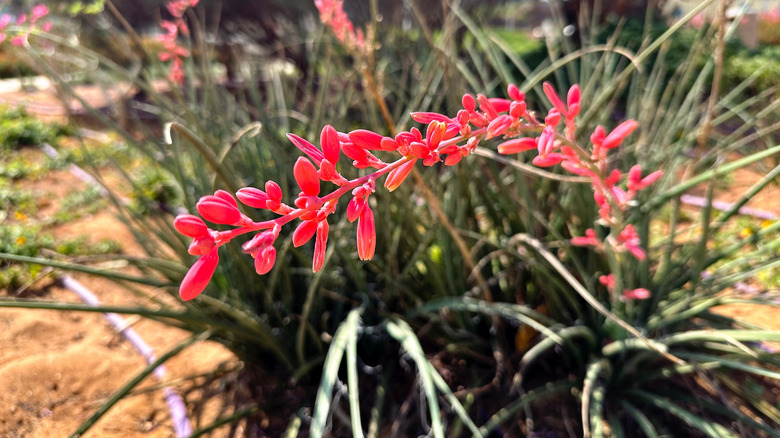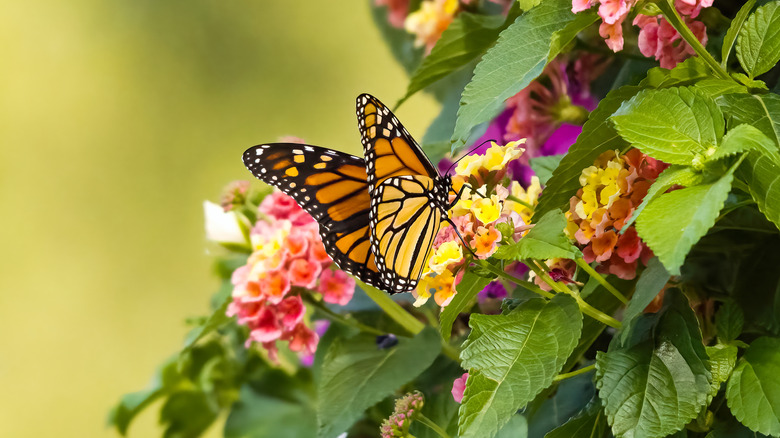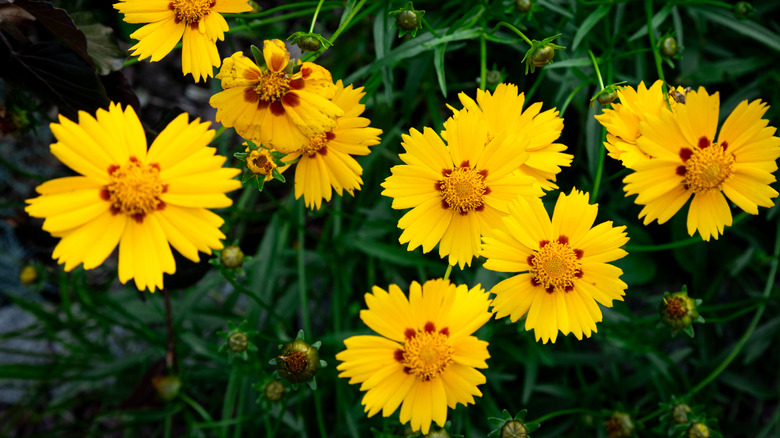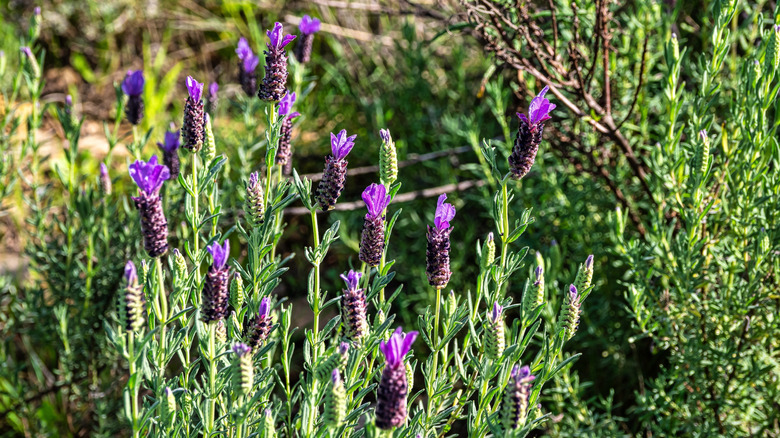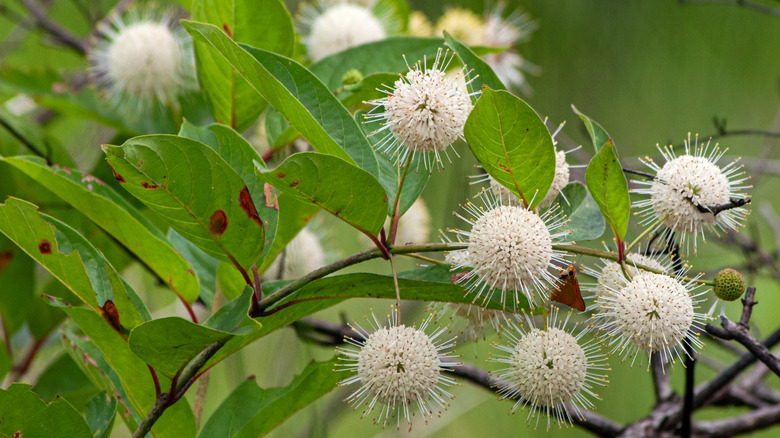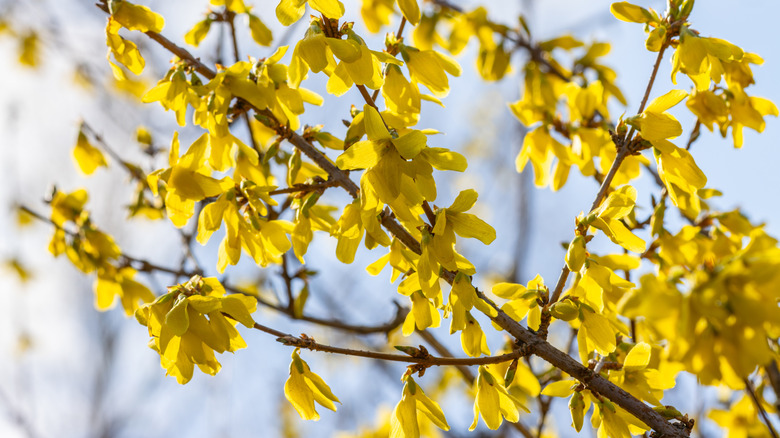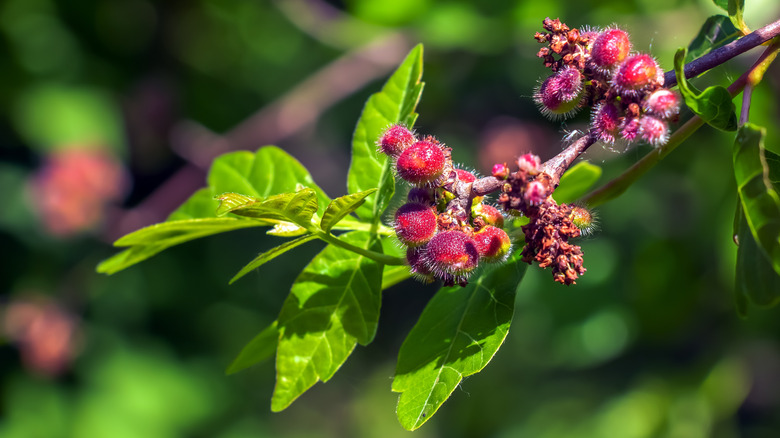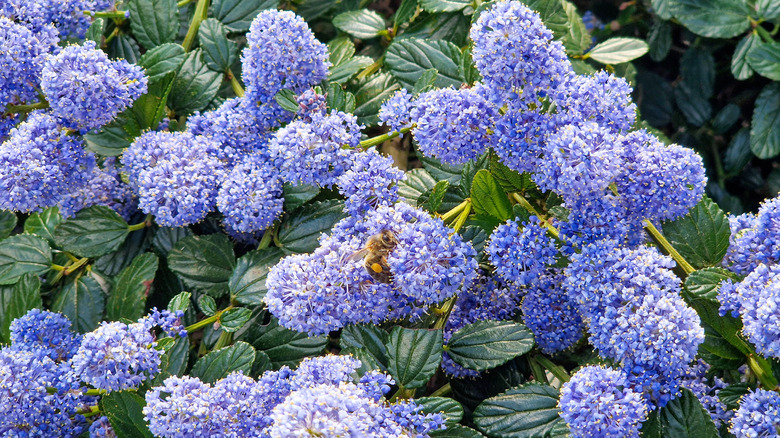10 Plants That Are More Heat-Tolerant And Easier To Grow Than Hydrangeas
While there are different varieties of hydrangeas, almost all of them are very thirsty plants that need a whole lot of water – about an inch per week. In dry, hot climates, hydrangeas are more likely to wilt and whither. Luckily, there are many other flowering shrubs that are drought resistant, heat tolerant, and a little easier to grow than hydrangeas.
Of course, heat can affect all plants, but it hits some more than others. Shrubs like Rose of Sharon, buttonbush, and butterfly bush are some of many heat-tolerant flowering shrubs that are great alternatives to hydrangeas, saving you both water and headaches. When the temperatures outside rise higher than 86 degrees, plants really begin to feel it. Their growth begins to slow, and they're less able to transform sunlight into food through photosynthesis. Hot temperatures also cause water to evaporate quicker, so plants absorb less of it.
Heat resistant plants have developed strategies to help them, like releasing isoprenes– a chemical that can help them stabilize photosynthesis in high temperatures. Other plants, like succulents, can store water during drought, and still others have leaves covered in small hairs or a wax-like coating that can provide protection from direct sunlight. Drought-resistant plants might grow very deep roots, so that they can find water far underground when it becomes scarce at the surface. If you live in a hot climate, here are 10 heat-tolerant and drought-resistant shrubs that are great alternatives to the thirsty hydrangeas.
Crepe myrtles don't mind humidity
You'll find lots of crepe myrtles (Lagerstroemia indica) in the South because this shrub doesn't mind hot and humid summers. It's part of the loosestrife family (Lythracea) that thrives in zones 6 to 9. They typically bloom from July to September, and their most common colors are blooms that are pink or red, though there are white species as well. Crepe myrtles are showy tree-like shrubs with woody stems and trunks that can grow as high as 30 feet, so keep that in mind when planting one in your yard.
Rose of Sharon gives off tropical vibes
Rose of Sharon (Hibiscus syriacus) is a heat-resistant flowering shrub that will thrive in USDA Plant Hardiness Zones 5 through 9. This hardy shrub prefers heat but doesn't mind a little shade. This plant also prefers a slightly alkaline clay or rocky soil. It comes in a wide array of colors, including pink, purple, red, and blue. Rose of Sharon can be quite the presence in your garden since it can grow to an impressive 12 feet tall and 10 feet wide, so plant in a space that can accommodate it.
Red yucca brings in the hummingbirds
Red yucca (Hesperaloe parviflora) not only tolerates heat and drought, but it's bean-like tubular-shaped red blooms will attract hummingbirds to your garden. It's such a hummingbird favorite that some call it hummingbird yucca. It's a kind of century plant, and it originated in the deserts of Texas and Mexico, so you know it has heat cred. But did you know it can also survive winters in zone 5? It's a hardy plant that in general will do best in zones 6 through 10 and can tolerate loam, sand, and shallow rocky soil.
Lantana hates the cold but loves the heat
Lantana (Lantana camara) is another fantastic heat and drought resistant perennial. Originally from Africa, this colorful ornamental hates cooler weather. It prefers zones 7 through 11. If you're asking yourself why is my lantana plant dying? It could be because it isn't hardy in your area. It'll die if temperatures drop below 28 degrees, so it'll need to be taken indoors if you've got cooler weather than that. Keep in mind that it's an aggressive grower, so you might want to contain it to pots.
Lanceleaf coreopsis isn't afraid of a little drought
The pretty flowers of lanceleaf coreopsis (Coreopsis lanceoslata) are a little unusual in that their center looks as if it floats above the petals. This heat-resistant perennial (also called tickseed) isn't afraid of humidity or drought, grows best in zones 4 to 9, and doesn't mind poor or shallow, rocky soil. It's deer tolerant too, so that's good news for anyone with active grazers in their yard. Deadhead the spent flowers to get plenty of new blooms.
Spanish lavender thrives in a dry environment
Spanish Lavender (Lavandula stoechas) is one of the more heat-tolerant strains of lavender — out of about 25 strains of the plant. You can identify Spanish lavender by its small, cylindrical flowers that bloom at the tips of the stalks called verticillaster. They also have little purple petals that extend from the top. Spanish lavender is hardy from zone 8 to 9. It prefers a slightly alkaline soil, and lots of sun. It does not like to be overwatered and requires decent drainage.
The hardy buttonbush shrub requires little fuss
The buttonbush (Cephalanthus occidentalis) is a versatile shrub that can tolerate heat and swampy conditions, and unlike most of the plants on this list, it craves wet soil and can even tolerate standing water as high as 3 feet. It's known for its white, pin-cushion like blooms, which form in clusters between June and September. The buttonbush can grow up to 20 feet tall, but it's more likely to reach heights of around 12 feet tall. It prefers zones 5 through 9.
Pretty yellow forsythia is an early bloomer
Forsythia, also known as Easter tree, is part of the olive family (Oleaceae). It's claim to fame is that it was named after William Forsyth, a Scottish botanist and founding member of England's Royal Horticultural Society. Forsythia is a hardy shrub that resists drought and thrives in poor soil. It mostly prefers zones 5 through 8 and does fantastic in warm, dry climates. Weather colder than -5 degrees will decrease the number of blooms for this shrub though.
Fragrant sumac provides beauty in every season
Fragrant sumac (Rhus aromatica) is a dense, low-to-the-ground shrub that reaches heights of about 2 to 6 feet tall. Its leaves change with the seasons, bringing on striking hues of orange, red, or magenta. This makes them a dynamic addition to the landscape. The fragrant sumac will grow red berries that will appear in the late summer. It's an incredibly versatile plant that thrives in a wide array of soil types and is hardy in zones 3 through 9.
California lilac's pretty indigo flowers are a nice substitute
California lilac (Ceanothus x delileanus) is one of several lilac shrubs that will grow in California. It's a crossing of an American species of lilac and one that's native to Mexico and Central America, which gives this particular breed a higher tolerance to heat and drought conditions. California lilac grows in zones 6 through 10 and can be propagated either by seed or stem cuttings. The lovely fragrance of this plant's blooms will draw both bees and butterflies into your garden.
